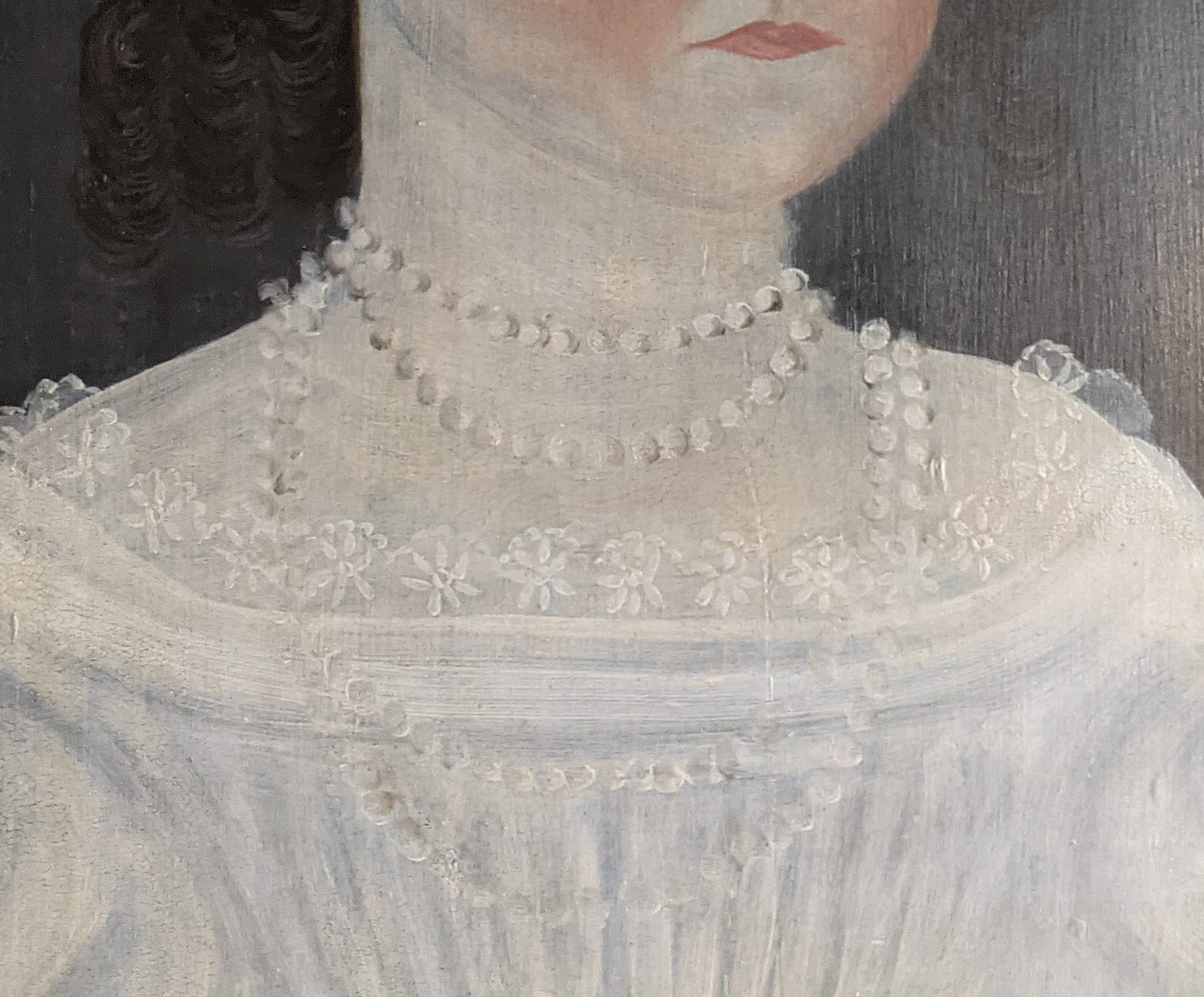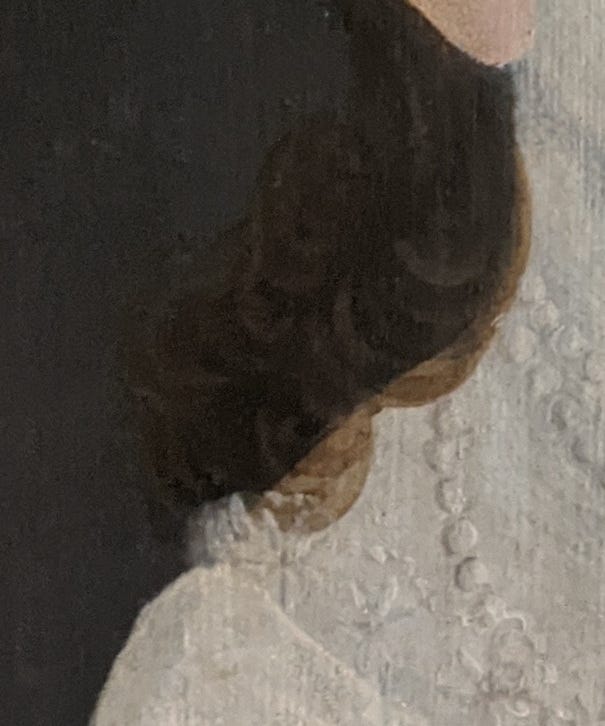Welcome or welcome back to History Buzz! If you’re a subscriber to the Buzz, thank you! If you’re new here, or you haven’t become a subscriber yet, please sign up for a subscription to have History Buzz delivered directly to your inbox. If you can, please consider a paid subscription to support the research and writing that make History Buzz possible.
Occasionally during my busy workday, I slow down as I walk through the History Center and take a closer look at the treasures that surround me. I’m reminded that years ago, as a college art history student, one of the first reading assignments was the classic book “Learning to Look” by Joshua Taylor. The book and my art history studies taught me to love looking deeply into paintings to see what details lie there.
It’s a reminder for me to slow down and look.
To observe.
To see the museum I walk through daily as a visitor might.
The other day, I stopped to look at these two folk-art portraits that sit side-by-side in the Blanchard house. They’re painted on wooden boards that are slightly warped. We know almost nothing about the paintings. Who was the artist? Who are the girls? Where did these two portaits originally hang?
American folk art was identified as a genre in the early 20th century. As collecting early American artwork and furnishings grew in popularity, collectors and curators sought to define “American art.” Collectors amassed large collections that eventually found their way into major museums including the Metropolitan Museum of Art, the Abby Aldrich Rockefeller Folk Art Museum, and the Fenimore Art Museum in Cooperstown, NY.
Throughout the 20th and 21st centuries, the definition of American folk art has rightfully expanded beyond what was “traditional early American” to include works by artists of all ethnicities, backgrounds, and time periods.
In the 18th and 19th centuries, many folk artists were itinerants who traveled from town to town seeking out new customers for their artwork. Folk artists of the time typically produced portraits, however some, including artist Rufus Porter, created other works (click here to read a History Buzz story about Rufus Porter).
Some itinerant artists started their education and careers as furniture painters, and so had some training. Although often untrained, these artists were familiar with the customs and styles of “high style” portraiture.
The poses, postures, props, and settings were the same as those used by “high style” trained, urban artists. Itinerant artists knew and understood their rural clientele and produced works that appealed to their customers.
These two folk art portraits have been in the History Center’s collection for a very long time. The provenance of the paintings is not known. In 1975, volunteers wrote to the Abby Aldrich Rockefeller Folk Art Center at Colonial Williamsburg asking for help identifying the two portraits. Their letter was addressed to Beatrix Rumford, the author of Treasures of American Folk Art: From the Abby Aldrich Rockefeller Folk Art Center.
I have to say, I have not followed up with the Folk Art Center to find out if they still have photos of our two portraits.
The two portraits bear many similarities that could indicate that they were created by the same artist, but nothing is known about the artist, or artists, who created them, nor about the sitters.
Folk art portraits, such as these, share similar characteristics. Most noticeable is the lack of depth. The figures, features, and clothing are flat.
However, if we zoom to the details, we can see that the artist certainly had skills. We can see it in the handling of the lace on the girls’ dresses that is as delicate and sheer as lace would be. The pearls are shaded to add depth. The curls in their hair is defined. And both girls meet the eyes of the viewer.
I’ve written a few posts about learning to look at works of art. You can read the posts by clicking here, here, and here. Let me know if you enjoy these posts. We can share more artworks from the History Center’s collection.
Please leave a comment, like, or share! You can help make History Buzz visible to a larger audience of readers.
Thanks for reading!
~Elaine













I always thought those two were twins. Now, because I was prompted to look at the portraits in a different way, I don't think they are. Sisters, perhaps?
Yes to more posts about the art.
I always enjoyed looking at these two paintings and wondered about who these girls were. Who was the donor? Could that person or their family shine any light on the provenance of the paintings? I'd love to attend a session on folk art paintings. Perhaps people would like to share images of any folk art paintings they have.